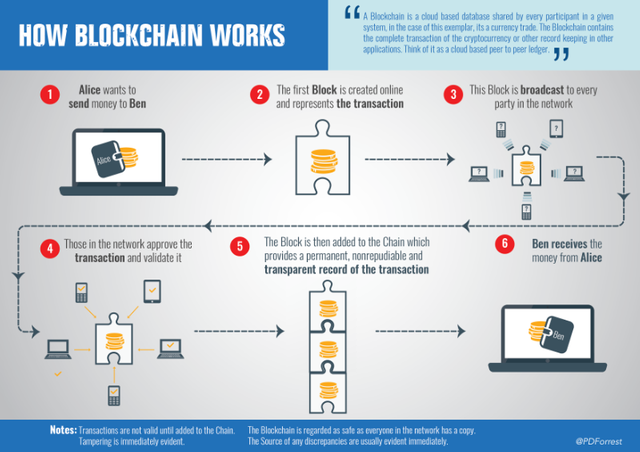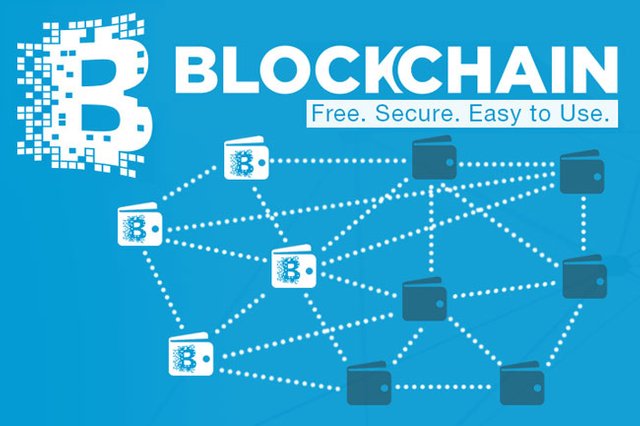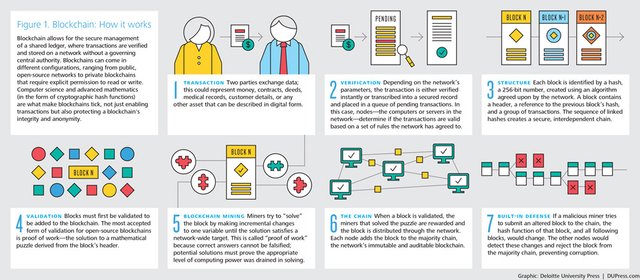The first work on a cryptographically
The first work on a cryptographically secured chain of blocks was described in 1991 by Stuart Haber and W. Scott Stornetta,[16] in 1992, Bayer, Haber and Stornetta incorporated Merkle trees to the blockchain as an efficiency improvement to be able to collect several documents into one block.[17][6]
The first distributed blockchain was then conceptualised by Satoshi Nakamoto in 2008 and implemented the following year as a core component of the digital currency bitcoin, where it serves as the public ledger for all transactions.[1] Through the use of a peer-to-peer network and a distributed timestamping server, a blockchain database is managed autonomously. The use of the blockchain for bitcoin made it the first digital currency to solve the double spending problem without requiring a trusted administrator.[4] The bitcoin design has been the inspiration for other applications.[1][3]
The words block and chain were used separately in Satoshi Nakamoto's original paper in October 2008,[18] and when the term moved into wider use it was originally block chain,[4][5] before becoming a single word, blockchain, by 2016. In August 2014, the bitcoin blockchain file size reached 20 gigabytes.[19] In January 2015, the size had grown to almost 30 gigabytes, and from January 2016 to January 2017, the bitcoin blockchain grew from 50 gigabytes to 100 gigabytes in size.[20]
By 2014, "Blockchain 2.0" was a term referring to new applications of the distributed blockchain database.[21] The Economist described one implementation of this second-generation programmable blockchain as coming with "a programming language that allows users to write more sophisticated smart contracts, thus creating invoices that pay themselves when a shipment arrives or share certificates which automatically send their owners dividends if profits reach a certain level."[1] Blockchain 2.0 technologies go beyond transactions and enable "exchange of value without powerful intermediaries acting as arbiters of money and information". They are expected to enable excluded people to enter the global economy, enable the protection of privacy and people to "monetize their own information", and provide the capability to ensure creators are compensated for their intellectual property. Second-generation blockchain technology makes it possible to store an individual's "persistent digital ID and persona" and are providing an avenue to help solve the problem of social inequality by "[potentially changing] the way wealth is distributed."[22]:14–15 As of 2016, Blockchain 2.0 implementations continue to require an off-chain oracle to access any "external data or events based on time or market conditions [that need] to interact with the blockchain."[23]
In 2016, the central securities depository of the Russian Federation (NSD) announced a pilot project based on the Nxt Blockchain 2.0 platform that would explore the use of blockchain-based automated voting systems.[24] Various regulatory bodies in the music industry have started testing models that use blockchain technology for royalty collection and management of copyrights around the world.[25][better source needed] IBM opened a blockchain innovation research centre in Singapore in July 2016.[26] A working group for the World Economic Forum met in November 2016 to discuss the development of governance models related to blockchain.[27] According to Accenture, an application of the diffusion of innovations theory suggests that in 2016 blockchains attained a 13.5% adoption rate within financial services, therefore reaching the early adopters phase.[28] In 2016, industry trade groups joined to create the Global Blockchain Forum, an initiative of the Chamber of Digital Commerce.[29]
In early 2017, the Harvard Business Review suggested that blockchain is a foundational technology and thus "has the potential to create new foundations for our economic and social systems." It further observed that while foundational innovations can have enormous impact, "It will take decades for blockchain to seep into our economic and social infrastructure."[8]
A blockchain facilitates secure online transactions.[30][better source needed] A blockchain is a decentralized and distributed digital ledger that is used to record transactions across many computers so that the record cannot be altered retroactively without the alteration of all subsequent blocks and the collusion of the network.[31][1] This allows the participants to verify and audit transactions inexpensively.[32] They are authenticated by mass collaboration powered by collective self-interests.[33] The result is a robust workflow where participants' uncertainty regarding data security is marginal. The use of a blockchain removes the characteristic of infinite reproducibility from a digital asset. It confirms that each unit of value was transferred only once, solving the long-standing problem of double spending. Blockchains have been described as a value-exchange protocol.[21] This blockchain-based exchange of value can be completed more quickly, more safely and more cheaply than with traditional systems.[34] A blockchain can assign title rights because it provides a record that compels offer and acceptance.[1]
A blockchain database consists of two kinds of records: transactions and blocks.[1] Blocks hold batches of valid transactions that are hashed and encoded into a Merkle tree.[1] Each block includes the hash of the prior block in the blockchain, linking the two. Variants of this format were used previously, for example in Git. The format is not by itself sufficient to qualify as a blockchain.[35] The linked blocks form a chain.[1] This iterative process confirms the integrity of the previous block, all the way back to the original genesis block.[36] Some blockchains create a new block as frequently as every five seconds.[37] As blockchains age they are said to grow in height.